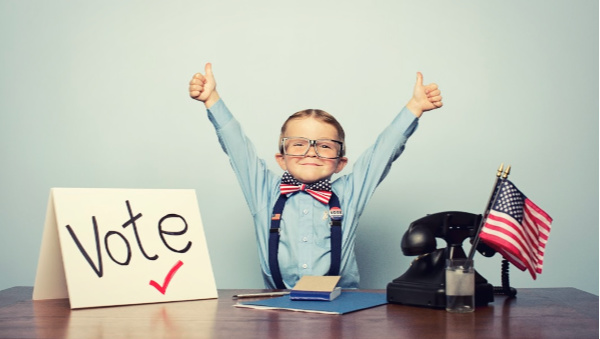Politics and kids don’t seem like a natural fit. To a child, learning about political and government issues might feel like extra schoolwork that’s full of (gulp) partisanship and vitriol.
Keeping politics relevant and accessible to your children can help them learn about it with enthusiasm. It also encourages them to get involved and make a difference.
Issues
Many children ask about politics, especially around election times when they see posters in shops and manifestos on doors. It’s important to encourage their curiosity and help them understand the concept of how local and central government works, rather than dismissing it as something they don’t need to know.
Pahlke points out that “there’s a whole literature on adults’ political attitudes, but very little that looks at kids.” She and her colleagues found that even off-hand comments can affect children. “We were surprised by how much fear we got from just a few comments,” she says.
Children’s reactions to political issues can be shaped by their perception of social hierarchy and prescriptive beliefs about how the world should be. For example, when 4- to 7.5-year-olds were exposed to different perspectives on inequality, those from Democratic households learned more about racial and economic disparity than those from Republican families. This can reinforce a sense of inequality, which can lead to political polarization.
Elections
With election season in full swing, kids will hear lots of talk about candidates, policy and politics. They may not be able to vote yet, but it’s important for them to start learning about the process now.
They can start by learning about local and state government and how policies affect things they know about like schools, roads and parks. They can also begin to understand the different political parties and how elections work, as well as learn about democracy, patriotism and American history.
By middle school age, children can start to understand broader concepts of politics and government such as how the constitution works and the separation of federal and state governments. They can discuss how the media influences political campaigns, and how people have different viewpoints. They can learn how to navigate disagreements with others and respect views that are different from their own. They can also read books or visit reputable news websites together to find answers to their questions.
Partisanship
Partisanship in US politics accelerated after Republican Newt Gingrich emerged as the leader of the House, with a vision that viewed political victory as war and favored any means necessary to gain it. He promoted a view of Democrats as traitors and immoral, and the use of any legal tactic to defeat them. This led Republicans to routinely filibuster Democratic legislation and use the impeachment process against Democrat President Bill Clinton on charges that fell short of the definition of high crimes and misdemeanors.
Children may quickly pick up the partisanship of their parents and siblings, as well as that of friends, teachers and their social circles. In addition, cognitive biases such as in-group bias can reinforce partisanship by cuing people to change their opinions to match those of the group they belong to.
A partisan child may also be less likely to engage in social activities, such as volunteering or participating in a school debate, which require interaction with people of differing viewpoints. Talk to your kids about how to have respectful conversations with those who hold different views from their own.
Voting
While children can’t vote yet, they will eventually be able to, and it’s important for them to grow up with an understanding that their votes do matter. Talking with them about the voting process, showing them how the electoral system works, and taking them to vote can help build that sense of citizenship in them.
As you talk with your kids about politics, be sure to include information from reputable news sources. Explain to them how media outlets often have a certain slant on the things they report, and that it’s helpful to hear a variety of views before making a decision about an issue.
Also, make sure to discuss positive current events. It can be easy for children to focus on the negative, so it’s a good idea to show them that there are people who are working for change, no matter what your political affiliation may be.

